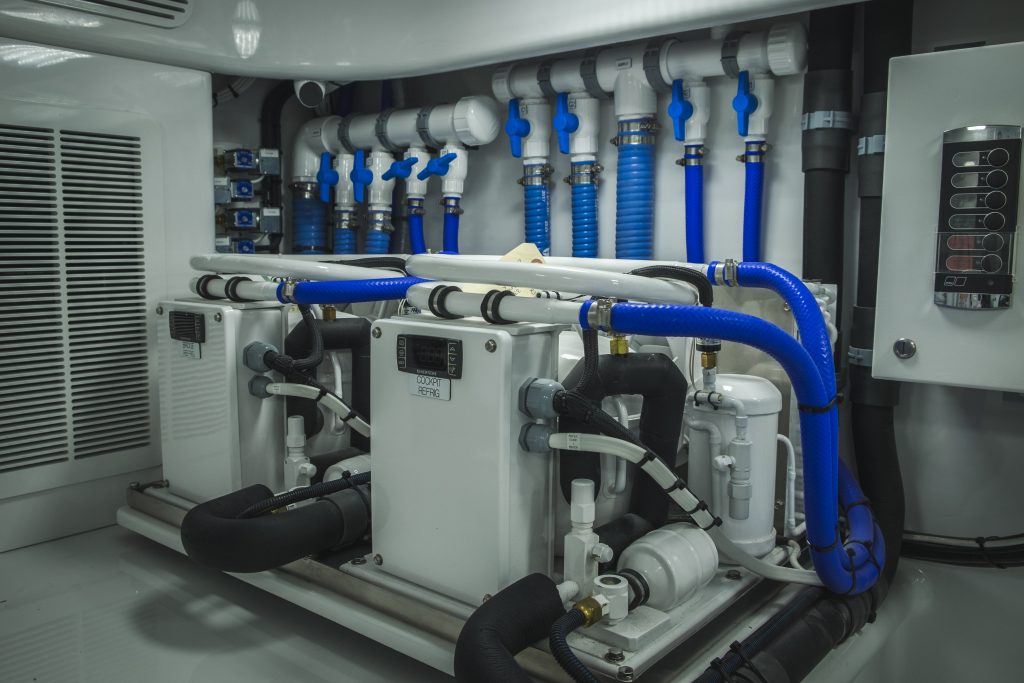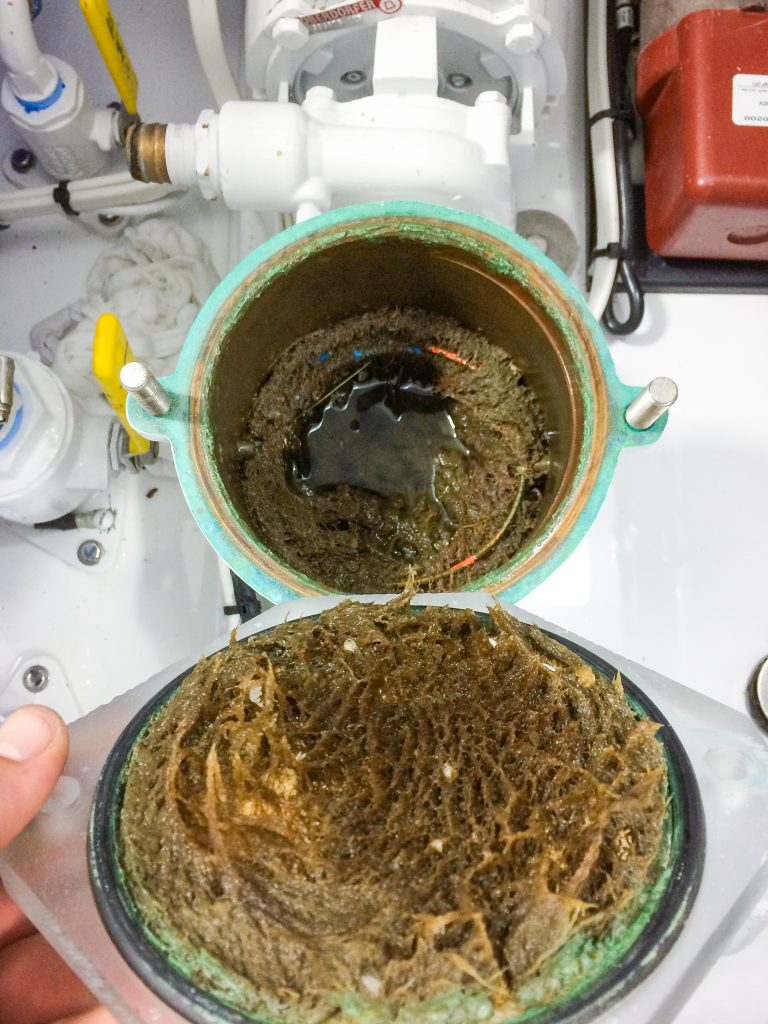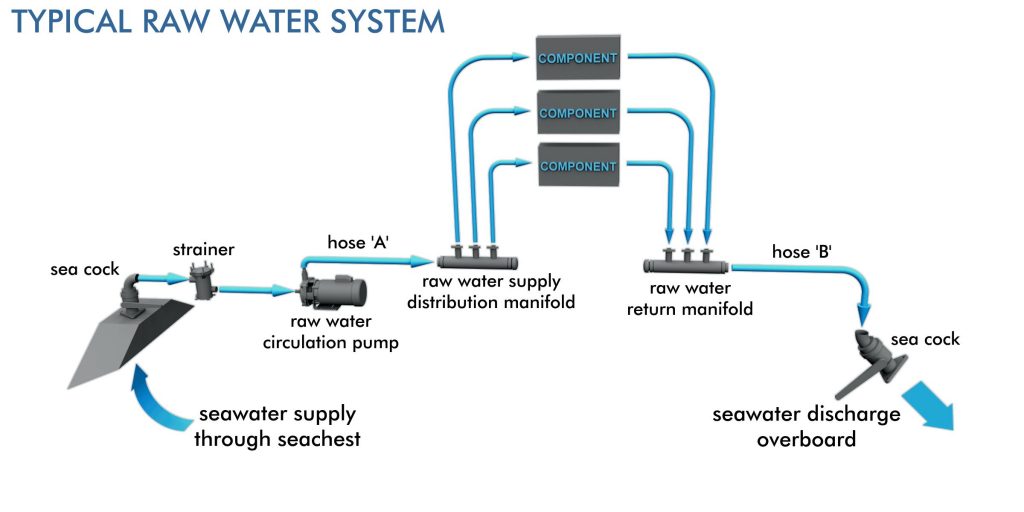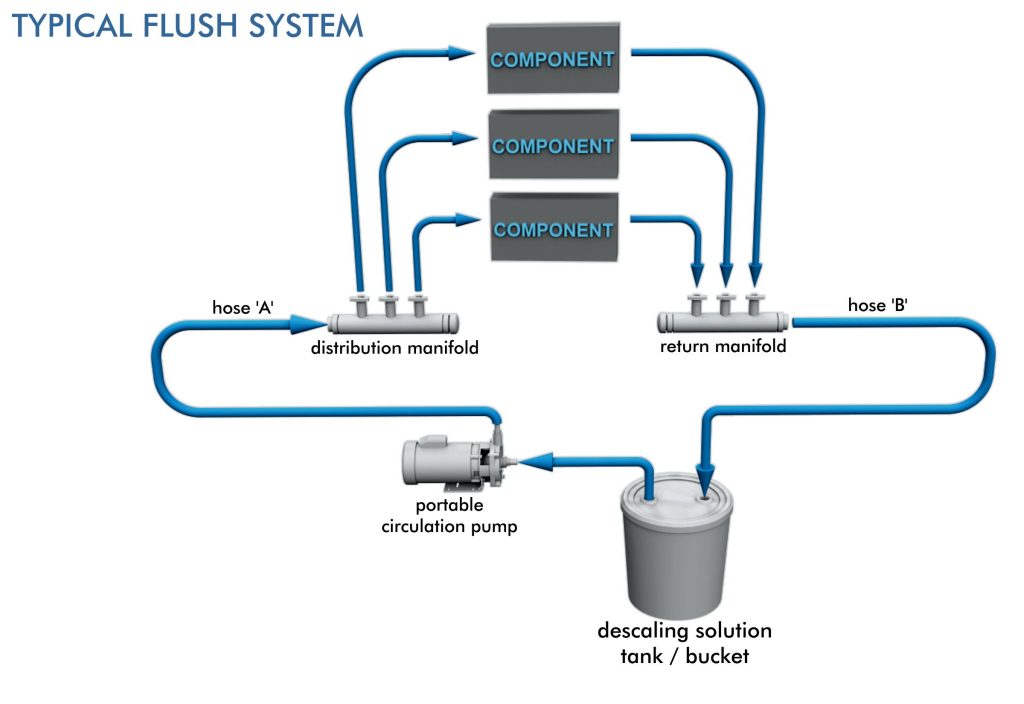Descaling AC Lines and Raw Water Systems with the Bayliss Boatworks Mechanical Department

When you’re fishing on a hot, humid day, it’s hard not to appreciate the cool air filtering through the cabin. But have you considered how your air conditioning system works and the potential problems that could arise without regular maintenance? In marine systems, cooling water enters the boat through a hull fitting in the seacock bringing in algae, microbial growth and marine life, including yes, crabs!
Bayliss Boatworks Mechanical Department employees Colin Noone, Dave Morris, and David Koerperich walk us through the descaling process- breaking down when it’s necessary and why it’s important.

- What is descaling?
Descaling is the introduction of freshwater or environmentally safe additives in to the raw water system. The additive circulates through the system dissolving buildup of microbial growth, algae, grass deposits, barnacles, and any sediment that has been left within your vessel’s plumbing.
- How do I know if I need to flush?
- Common equipment code HPF (High Pressure Fault)
- Visible restriction in the raw water discharge
- Diminished flow rate
- The system has never been flushed
- Noticeable growth in strainer (or even live creatures)
- What are the effects of growth and scale?
- Diminished performance
- Higher power consumption due to higher amp draws
- Reduction of equipment life
- Irreversible impacts to equipment components
- Excessive strain on plumbing (more pressure equals more leaks)
- Untimely system failure
- Why is descaling so important?
Descaling returns the engineered system back to the original designed flow rates, thus restoring the optimal performance of the system and eliminating untimely and costly system failures.
“The key to an enjoyable day on the water is preparation,” says Colin Noone, our Mechanical Supervisor. “Properly maintained equipment is less likely to fail, and more likely to create a much more memorable experience for everyone involved.”
Whether you decide to tackle descaling the AC system yourself or you just put it on the list for your next boatyard visit, a couple of hours of maintenance will certainly save you in the long run.

How to flush the system:
- Obtain current discharge flow rate (GPM).
- Turn the power off and close the seacock supplying the raw water pump.
- Locate the raw water discharge. You will need to be able to disconnect where the raw water exits the boat (beware of connections under the water line).
- Determine how to make a closed loop (inlet of system to outlet of system)
- Typically, there would be a secondary portable pump for the descaling process. The secondary pump must pull the descaling mixture from your bucket/tank and pump it into the hose removed from the seawater pump outlet, then through the system. Once the descaling mixture flows through the system, it returns back into the bucket/tank from the discharge hose removed for the raw water exit.
- Flush the system through typical flow direction for 1-2 hours depending on the size of your system.
- Flush the system opposite typical flow direction for 1-2 hours depending on the size of your system.
**Please note** Actual time will vary depending on the amount of growth and accessories in the system.
- After flushing the system both ways with descaling agent, properly dispose of the fluid and flush both directions with fresh tap/dockside water until the water returning to the tank is clear.
- Clean the raw water strainer.
- Reassemble the system and check the flow rate. Repeat as necessary.

